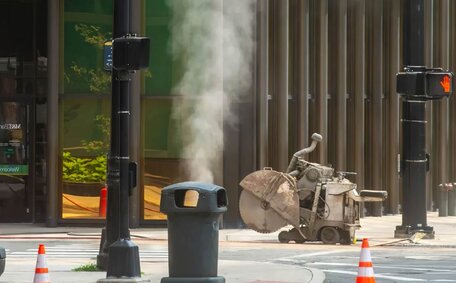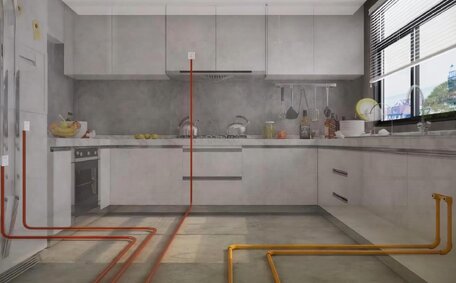
How To Move A Gas Meter
Need your gas meter relocated? You can’t move it yourself - contact your supplier to arrange for a gas engineer to reposition it safely. Charges may apply depending on circumstances.
Read MoreA hot water system warranty typically covers the tank and internal components against defects, but excludes incorrect installation, external plumbing issues, and normal wear and tear. Knowing these details helps you assess the viability of a warranty claim.
Water heater warranties usually span 5-10 years from the purchase or installation date for residential use. Review what your water heater warranty covers to verify including terms length, inclusions, and exclusions.
Some premium models come with extended warranties that include labour, offering various levels of coverage for parts and labour costs.
To lodge a claim for your water heater warranty, contact the manufacturer or authorised dealer with proof of purchase and issue details. A service technician will assess the problem to confirm if it equates to a major failure warranting coverage under the warranty. Repair or replacement will use genuine parts to restore functionality.
Warranties provide consumer protection against defects, but regular maintenance is important to maximise system life and maintain warranty validity. Schedule regular service dates to document proper maintenance, thus safeguarding your warranty and ensuring that guaranteed protections are upheld. An extended service warranty may also minimise future repair costs.
Hot water system warranties typically cover:
Coverage often does not extend to loss damage caused by:
Comprehending your hot water system’s warranty scope is crucial before filing a claim. Consider additional protection, such as an extended warranty, which safeguards against major issues and offers indispensable guarantees.
To make a warranty claim, having documentation readily available is crucial. This includes:
Retrieve the product service documents that came with your hot water system to begin a warranty claim. If physical documents are missing, use the product’s serial number to refer to the manufacturer’s online guidelines for digital records. Ensuring your product is registered with us remains crucial to activate your home warranty coverage.
Maintain all purchase-related documentation for quick reference. Details like installation dates aid diagnosis while proof of purchase and serial numbers verify eligibility to make claim under your warranty, accounting for any other reasonably foreseeable factors.
Should there be uncertainty around coverage or warranty application as per consumer protection laws, consult the manufacturer for clarity on non-excludable points. Keep your serial number and model information readily available, as you’re also entitled to guarantees of acceptable quality that cannot be excluded. The manufacturer can detail the duration, included and excluded items, and claiming procedures for your specific hot water system.
Follow these key steps when filing a hot water system warranty claim:
Following warranty instructions carefully can streamline the claim process. Be detailed when describing defects and keep thorough documentation ready to support your claim.
When lodging a warranty claim, ensure you have the necessary documentation to proceed. This typically includes:
Collect:
Maintain both digital and physical copies of your warranty and pertinent records to prevent potential losses or processing delays. Missing details can delay processing or lead to claim denial.
Maintenance records demonstrate adherence to use guidelines confirmed by fully trained water service technicians. Qualified technicians can diagnose issues effectively, assessing if warranty qualifications are met.
If you need to contact the hot water system manufacturer regarding a warranty claim, first check the warranty documentation or the company’s website for up-to-date contact information. Manufacturers typically provide specific email addresses or phone numbers for warranty support.
When you contact your service providers regarding your warranty, have your proof of purchase, model details, serial number, and information on the failure ready to share. Clearly explain the issue you are experiencing and why you believe it should be covered under warranty based on the terms.
Manufacturers often ask about the issue and warranty service to determine next steps like scheduling a technician’s visit or repair or replacement paperwork. Be prepared to submit maintenance logs or other documents if requested.
If contacting the manufacturer proves challenging or your claim is unexpectedly denied, respectfully request reasons and explore alternative solutions or appeal options under the consumer rights afforded by Australian Consumer Law.
Once your warranty claim is authorised, scheduling for repairs or replacement of your hot water system will commence. Expect to wait approximately 1-2 weeks as the manufacturer coordinates with local technicians and orders parts for your unit to be repaired or replaced, potentially covering any expenses.
On the agreed date, select your best point of entry to facilitate the repair technician’s access to examine and service your hot water system, as part of the rights and remedies provided under the warranty. Diagnosis typically takes 30-60 minutes, with repairs taking 2+ hours or unit replacement 1-2 days if significant modifications are required.
Once complete, the manufacturer should provide a detailed invoice for the service call. Supply any additional paperwork they request for claim processing and closure. Obtain a copy of updated warranty details if an extension was provided due to the defect.
Stay in communication with the manufacturer throughout the process and escalate if excessive delays occur. You may need to inform your insurance of temporary hot water solutions or reimbursements you’re eligible for per Australian Consumer Law if the issue severely impacts living conditions.
Self-troubleshooting can be time-efficient and may not necessitate using your warranty, depending on the issue. Try these do-it-yourself tips or opt for a refund unused before contacting the manufacturer:
For ongoing or complex issues, consider claiming a warranty refund for the unused portion or seek help from a licensed plumber. But trying simple home remedies could resolve many common hot water system problems without the need for warranty claims or manufacturer involvement.
Deciding to cancel your service contract and replace an older system needing repairs or with a fault can be difficult. Consider the following factors before investing in a new water system:
Professional advice can help you evaluate whether to repair or replace your water heater. Licenced plumbers provide detailed quotes outlining repair/replacement costs and benefits to determine the optimal solution for your home and budget.
Staying engaged throughout the warranty process ensures your claim is handled promptly and fairly based on your coverage.
After submitting a warranty claim, allow 2-3 weeks for processing and repairs to be scheduled. If you haven’t heard an update, politely contact the manufacturer to check on the claim’s status.
During follow-ups, have your claim number, proof of purchase, and any anticipated necessary documents ready for reference. Clearly state your name, contact details, and the date you originally filed the claim. Ask what stage the review is at and expected timelines moving forward.
If additional information is needed, supply it promptly to aid processing. For denied claims, request the denial reason in writing to assess whether appealing the decision is worthwhile for your situation.
Occasional, courteous follow-ups show you are engaged but also give adjusters time to resolve issues that qualify under your hot water system’s warranty coverage terms.
When your hot water system warranty claim is approved, repairs or replacement are typically scheduled within 1-2 weeks. The manufacturer coordinates qualified technicians and orders any necessary parts to be carried out during this period.
Ensure clear access to your hot water system on the arranged service date so the technician can efficiently carry out the covered repairs or replacement as part of the rights and remedies under Australian warranty.
Minor fixes usually take 30-60 minutes. More complex repairs could take 2+ hours. Full replacements of your water tank require 1-2 days based on system modifications needed.
Once service is finished, the manufacturer should provide a detailed invoice outlining the work completed. Supply any additional paperwork requested to finish processing your claim. If eligible, also request a copy of your updated warranty with extended coverage due to the defect.
Stay in regular contact throughout the process to track progress and inquire about solutions if excessive delays occur. You have rights under consumer law which may include temporary water solutions or reimbursements if lack of hot water severely impacts living conditions.
Need your gas meter relocated? You can’t move it yourself - contact your supplier to arrange for a gas engineer to reposition it safely. Charges may apply depending on circumstances.
Read MoreInvesting in a solar hot water system can save up to 75% on water heating costs. With great returns and added home value, solar hot water can be a smart choice over electric or gas heaters. Contact us to see if it’s the right investment for your home.
Read MoreWhile natural gas and propane can both power appliances in your home, they have notable differences when it comes to BTU output, infrastructure, safety, cost and more. Understanding these key contrasts will help you determine which is better for your specific needs.
Read MoreMenai, 2234 NSW
We will call back as soon as possible.




